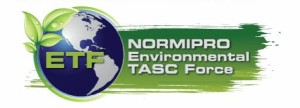When disaster strikes, whether from natural forces like hurricanes and floods or from incidents like fires and plumbing failures, the damage to homes and businesses can be extensive. This guide explores the critical services of mitigation and restoration, which are designed to help property owners recover from such events. We will cover what these services entail, the different types of damage they address, and the importance of timely intervention.


Mitigation refers to the initial steps taken to prevent further harm to a property immediately following a disaster. The primary goal of mitigation is to stabilize the situation and protect the property from additional harm.
Mitigation and restoration services are essential for anyone facing property damage due to disasters or accidents. Understanding the scope of these services and the importance of prompt action can help minimize the impact of such events. By engaging professionals who are skilled and responsive, property owners can navigate the aftermath of a disaster more smoothly and with confidence that their property will be returned to a safe, welcoming state. This guide aims to equip homeowners and business owners with the knowledge they need to make informed decisions about these services, ensuring quick recovery and long-term protection of their assets.
Mitigation efforts vary depending on the type of damage but typically include:
Prompt action is crucial as it significantly reduces the risk of secondary damage, such as mold growth or structural weakening, which can complicate the restoration process and increase repair costs.
After the initial mitigation, restoration services take over to repair and rebuild the damaged areas to their pre-disaster condition. Restoration can be a complex process, depending on the severity of the damage and the materials affected.
Mitigation and restoration services cover a variety of incidents:
Selecting a qualified and experienced service provider is vital. Here are factors to consider:
Investing in professional services not only helps restore your property quickly but also offers long-term benefits:
Restoration also involves environmental considerations, such as responsibly disposing of hazardous materials and using sustainable materials and methods in the rebuilding process.





We know it is not easy to cover the cost of a project for unexpected home emergencies. We can help!
Well Home Solutions, your dedicated expert in navigating home restoration and repair across Florida with unwavering commitment and professional integrity.
Our Support and Sales team is available 24 /7 to answer your queries